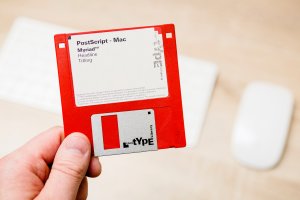Then vs now: How event planning has changed

Thanks in large part to huge advances in technology, event planning has undergone a remarkable evolution since the 90s. While it’s customary to reminisce fondly about a rose-tinted past, in reality, event planning today is much more efficient, reliable, flexible, and exciting than it ever has been. We’ve taken a short amble down memory lane to see just how far the industry has come.
Back then, invitations were sent via snail mail and RSVPs were recorded manually.
In the 90s, event invitations were sent in hard copy format via snail mail, a method that’s usually only reserved for weddings today. RSVPs were likewise mailed back, or alternatively given by telephone. (And we do mean telephone, not mobile phone.) Event planning protocol then required recording RSVPs manually in a spreadsheet.
Now, event management software streamlines the entire invitation and RSVP process.
Today, not only can invitations be sent via email, but specialist online event management software makes it possible for guests to RSVP and register for events online as well. This software also makes collecting important guest information, such as special dietary requirements, a breeze. When it comes to on-site registration, event staff are now able to perform a quick and seamless check-in process with the use of connected tablets or mobile devices.
Back then, recording an event was an awkward task.
As the writer of this article recalls, filming an event in the past required “a very strong shoulder”. That’s because the only way to record video back then was with a camera “the size of a toddler”. Polishing the finished product then took days (or weeks) of editing by a professional.
Today, even guests can live-stream your event.
Not only are modern video cameras much smaller and easier to operate, they’re often not even necessary anymore. Thanks to smartphones equipped with high quality cameras and obligatory wifi connections, event planners, keynote speakers, and attendees alike are able to instantly upload both images and video content to social media networks like Instagram, Facebook, and Twitter. This ability to live-stream events online has the added benefit of giving your event limitless reach and exposure.
Back then, audiences were largely passive.
Traditionally, conferences and corporate events featuring keynote speakers followed a pretty standard format. Audiences simply listened and watched, only interacting with the speaker at the end of the session during the customary five minute question-and-answer session.
Modern event planning includes finding ways to engage participants.
Today, encouraging and facilitating audience engagement is a big part of event planning. This engagement begins before an event has even kicked off. In the lead-up to an event, attendees are able to interact with event planners, organisers, and scheduled speakers through social media channels. In some cases, attendees are even able to influence the event planning process, as they’re able to do things like vote for which speakers or artists they’d like to see on stage. During the event, attendees are similarly able to engage with each other and keynote speakers via social media channels like Twitter. Guests can tweet questions at speakers while they’re on stage, and continue the conversation online long after the event has ended. This enduring audience engagement gives modern events greater traction and influence than ever before.
Mobile devices, social media, and specialist event management software have dramatically changed the face of modern event planning. Pulling off successful, memorable events today requires understanding how modern participants behave and knowing how to use all the tools available to you to give your event maximum traction.
Don’t risk plunging your guests into the dark ages with outdated event planning techniques. Contact us to find out more about how our event planning and management services can help you get the most out of your next event.
